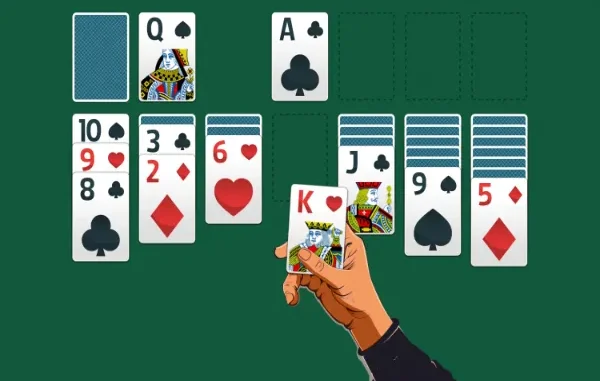
In a world increasingly defined by speed, distraction, and overcommitment, people are reaching for simple digital practices that restore calm and clarity. Among these is an unexpected yet enduring companion: solitaire. This classic card game, once a default on early computers and still thriving across apps and websites, has emerged as a quiet ally in the digital minimalism movement. Without flashy animations, in-app purchases, or social metrics, solitaire offers something more powerful a still moment in a noisy day.
The Digital Escape Through Simplicity
Modern technology, while powerful, often overwhelms. Between alerts, feeds, and notifications, users are constantly pulled in multiple directions. Solitaire defies this pattern. It offers a screen-based activity that demands attention but not anxiety. There is a subtle reward in moving cards logically, clearing decks, and arriving at a win with no external scoreboard or likes to tally. The player isn’t competing with anyone, only interacting with the structure of the game itself.
This pared-down experience aligns perfectly with the core principles of digital minimalism. The game doesn’t demand account signups or encourage binge usage through dopamine loops. It sits quietly on a screen, available when needed, and forgotten when not. Users aren’t penalized for ignoring it, nor are they tricked into extended sessions. It provides a clean, bounded experience that is increasingly rare in the digital sphere.
Solitaire’s Quiet Mental Structure
Beyond its simplicity, solitaire offers a rare blend of gentle mental stimulation and calm focus. Every card moved is a tiny decision based on logic, probability, and order. These micro-decisions occupy the mind in a way that clears away mental clutter. Instead of bouncing between tabs or scrolling endlessly, a person sits with one task: solving the card layout. The result is a form of quiet, cognitive alignment.
For many, solitaire becomes a tool for transitioning between activities. A short session before a meeting, after an intense task, or in the middle of a chaotic day can function as a form of mental stretching. It neither taxes the brain with intensity nor allows it to slump into passive consumption. It sits in the middle ground, engaging without overstimulating.
This unique quality makes it more than just a nostalgic game. It becomes a form of digital mindfulness repetitive yet varied, structured yet flexible. In moments when meditation feels too still or a workout too active, solitaire exists as a middle path for the brain to settle into rhythm and flow.
A Game Without Noise or Judgment
The solitaire experience also lacks the social friction that defines many other digital environments. There are no leaderboards, no online opponents, and no fear of failing publicly. Success and failure happen quietly, on one’s own terms. This absence of judgment is a feature, not a limitation. It allows players to engage without stress or ego.
In many ways, this is the essence of why solitaire aligns so well with the minimalism movement. Minimalism is not simply about reducing clutter but about choosing what deserves focus. Solitaire represents a clear choice in this regard. It does not shout for attention or manipulate engagement. It waits until needed, offers its experience without pressure, and then recedes.
Even visually, many solitaire interfaces have resisted modern design excesses. The color palette is usually neutral. The design mimics the feel of real cards. Movements are slow, deliberate, and easy on the eyes. In an era where interface noise can be as distracting as content, the quiet visual consistency of solitaire is both nostalgic and therapeutic.
Building Personal Digital Habits Around Solitaire
Using solitaire deliberately can help shape broader digital hygiene. By replacing a habitual scroll with a five-minute solitaire game, users are taking control of their engagement patterns. The game’s boundaries make it a useful tool in this regard. It’s difficult to get “lost” in solitaire the way one might in social media. It invites focus and then releases the user when the deck is done or the puzzle solved.
People interested in digital minimalism often struggle with removing screens entirely. Work, navigation, and communication all rely on them. The solution, then, is not always avoidance but intentional use. Solitaire becomes a digital placeholder a calming option in the menu of choices, one that doesn’t lead to a dopamine spiral or unwanted data tracking. It’s there for the moments between, not the moments meant to last forever.
Choosing solitaire as part of a minimalist digital routine also has practical benefits. It requires no Wi-Fi, no battery drain, and no special equipment. It runs quietly, with few ads if chosen well, and no pressure to upgrade or share. For those who value privacy, quiet, and focus, these features matter deeply. The ability to retreat into something self-contained and nourishing is a rarity on most digital platforms today.
When Less Is More in a Game
In a world where more often means busier, solitaire stands as proof that less can still mean better. It doesn’t attempt to be a social network, an RPG, or a story simulator. It is a simple card game, unchanged in form for decades. That very stillness is its strength. It asks the player only to think clearly, move cards with intention, and enjoy the quiet rhythm of play.
In that simplicity, solitaire offers a kind of digital shelter a place where thought can unfold without noise and victory is a soft click rather than a public badge. As digital lives grow more complex, finding time and space for deliberate interaction becomes essential. Solitaire provides one such space, humble yet effective.
Whether played during a workday pause, as part of a morning screen ritual, or while settling in for the night, solitaire proves that not every app needs to demand your life. Sometimes, a simple game is enough. Not because it changes everything, but because it changes nothing and in a world obsessed with more, that can feel like freedom.
Leave a Reply